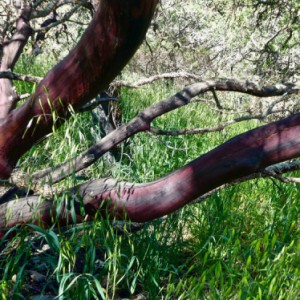Douglas Iris
Spring arrived in all its glory while we were gone. Our roses, just putting out a few buds when we left, were covered with blooms, the bearded iris we rescued from the trash heap when we moved here 5 years ago are bursting forth in different shades of blue, yellow and wine (red, of course). OilMan came in today with a huge bouquet of sweet peas. It's funny...they were multicolored when we planted them (that is definitely they royal 'we'). OilMan saved the seeds and planted them and, although there are lots of them, they are all exactly the same variegated purple and white color. Darwinian survival I suppose.
OilMan is now hustling to get a new kind of tomato support because the plants he put in the ground just before we left are now a couple of feet high. Much thought is being given to which of the seven hundred kinds of peppers to plant and OilMan is working on a frame for the Armenian cucumbers. They are only about 5 inches long and an inch and a half in diameter, but have no seeds. We're harvesting fava beans almost every day and will be planting fillet beans soon. Or maybe we did...I never know exactly what he is up to up there.
We joke about the fact that it is probably a lot cheaper just to go to the store and buy all this produce, but it certainly isn't as much fun, and doesn't taste as good....
We decided to go to the regional park near Glen Ellen this morning. It took quite a big hit in the fire and we wanted to see how it is faring. My picture today is of a wild iris almost obscured in the eye high grasses. The rattlesnake grass, named for its resemblance to a rattlesnakes' rattle, usually growing in demure little clumps is everywhere this year. The poison oak is also thriving. I was glad I wore my long pants even though it was warm enough for shorts.
It is quite easy to read the progress of the fire took in the burn patterns on the oak trees. Some are burned only at the bottom where the fires were moving too quickly to climb to the crown, others are beginning to put little green shoots out of their blackened trunks or at their bases. The madrones didn't fare so well, but even the burned ones have a beauty all their own.*
The blackened earth visible throughout the park in December is now covered with grass. At one point, our trail completely disappeared into a thicket of grass and thistles. Ozzie was at a bit of a loss, but forged ahead, disappearing completely into the exuberantly blooming thicket.
It always strikes me how Mother Nature has all kinds of strategies for recovering, while it is we, who build our structures on the land, are far less able to cope.
*extra


Comments
Sign in or get an account to comment.


